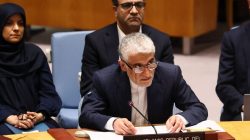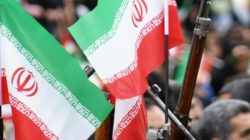“After a storm comes a calm.” This holds true for Universal Health Coverage (UHC) in Kenya, as
The government brought about substantial enhancements to the program through implementing unparalleled policy modifications, which sparked intense criticism from certain segments of society.
These advancements were realized via the Social Health Authority (SHA) implementing the obligatory Social Health Insurance Fund (SHIF), Primary Health Care Fund (PHCF), and Emergency, Critical, and Chronic Illnesses Fund (ECCIF) as part of an enhanced version of the Taifa Care Program.
This action attracted protracted public outcry, but the government stood its ground with the conviction that every new program has teething problems at its formative stage and no amount of opposition would deter implementation of the long-tested UHC program.
So far, the SHA has registered over 22 million Kenyan citizens as opposed to a modest number.
Eight million Kenyans who have enrolled with the National Health Insurance Fund (NHIF) over 43 years indicate that the adoption among Kenyan citizens has rapidly increased.
As a result, this initiative has extended social health insurance coverage to an additional 11.7 million Kenyan citizens and guarantees that every Kenyan can receive equitable and high-quality healthcare irrespective of their economic status via the Taifa Care program, which aligns with the Bottom-Up Economic Transformation Agenda (BETA).
To leverage this confidence among Kenyans, the government has introduced strong measures such as e-voting systems.
The expansion of insurance coverage now includes specialized treatments, realized via an improved benefit package under the SHIF program. Access to primary health care, emergency services, chronic disease management, and critical illness funds—backed by the government—is provided to all Kenyan citizens. As a result, this initiative has significantly alleviated the financial burden for those who receive these benefits.
To strengthen primary healthcare, the government has taken measures.
hired and provided equipment for a total of 106,542 Community Health Promoters (CHPs), supplying them with 100,000 kits for universal health coverage across the nation.
This initiative has bolstered primary health care services by guaranteeing broader accessibility and enhanced health-care provision at the community level.
Among the enhancements in the UHC program are more frequent home visits and health screenings aimed at preventative care. So far, approximately 8.5 million households have received these visits, which represents an 85% attainment rate towards their target of covering 12.5 million households. This effort has also led to numerous medical referrals.
The introduction of an advanced integrated healthcare information management system at the Kenya Medical Supplies Agency (KEMSA), alongside the establishment and activation of regional distribution hubs, has enhanced accessibility and stock levels of medicines and non-pharmaceutical products.
President William Ruto introduced SHA as a remedy to provide affordable quality healthcare to Kenyans irrespective of their economic status, since many were burdened by exorbitant medical costs that pushed them into poverty.
The President has been reassuring Kenyans that, even though past efforts to establish universal health care have not succeeded, the Kenya Kwanza administration remains dedicated to achieving this goal regardless of the expenses involved.
The country’s leader encourages Kenyans to keep enrolling in the SHA program, noting that it has been effective and offering healthcare access to most citizens.
He explains that the registration process will allow the government to collect precise information necessary for the successful implementation of the program. He further states that Taifa Care aims to tackle the fraud issues that marred the former NHIF system, where approximately 40 percent of submitted reimbursement claims turned out to be fraudulent.
“Individuals who possess the resources are contributing based on their capacity. Nevertheless, the government is covering the costs for those unable to do so. Additionally, we have reached an agreement with both county administrations and community leaders that getting it right this time around is essential,” asserts President Ruto.
Under the SHA program, a health facility that has been both appointed and hired receives payment solely based on genuine, recorded, and confirmed patient visits, adhering to specified rates. This approach aims to prevent potential instances of fraudulent activities.
The most recent advancement involves incorporating Tuberculosis (TB) cases into the SHA program, which means that similar to other Kenyans, TB patients can now rely on appropriate care through SHIF.
“As Kenya intensifies its battle against diseases, we have incorporated TB care into the SHA program to guarantee everyone has access to diagnosis, treatment, and care as part of our journey towards Universal Health Coverage,” asserts Ms. Mary Muthoni, the Principal Secretary for the State Department of Public Health.
The PS further notes that the cancer care package within SHA was raised from KES 400,000 to KES 550,000, and approximately 50,000 Kenyans are enrolling in SHA each day on average.
Among the accomplishments in the healthcare domain under the Kenya Kwanza Administration are: expanding the workforce in health along with boosting the number of KMTC graduates and campus locations, implementing the Health Information Exchange System (HIES), enabling instant access to patient information where more than half of medical facilities have joined thus far, as well as setting up the Electronic Community Health Information System across all 47 counties.
The Deputy Government spokesperson, Ms. Mwanaisha Chidzuga, describes the Strategic Health Assistance (SHA) program as a transformative initiative. She emphasizes that over time, this program will help Kenyan citizens suffering from serious health conditions obtain necessary medical treatment more conveniently. This change has the potential to significantly improve the quality of life for many families who previously struggled under the weight of substantial healthcare costs.
“Taifa Care is the path forward as it delivers on President Ruto’s commitment to enhance Universal Health Coverage, allowing Kenyans to benefit from this initiative,” stated Ms. Chidzuga.
The individual serves as a public communications officer for the Office of the Government Spokesperson.
Provided by Syndigate Media Inc. (
Syndigate.info
).






